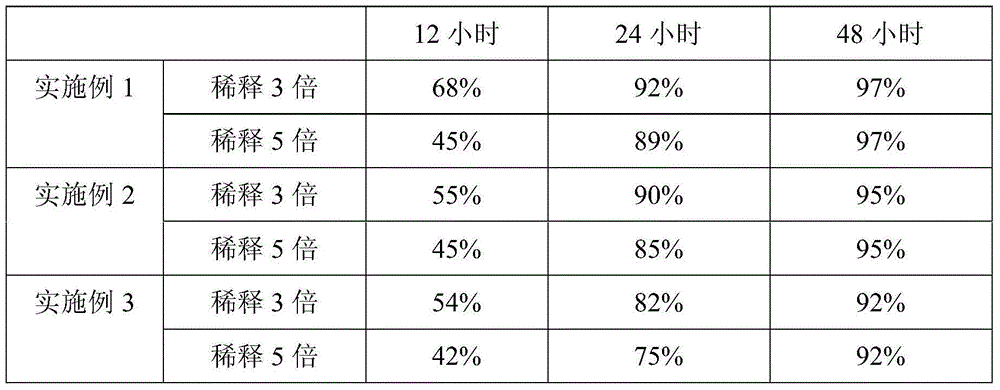Preparation method for botanical pesticide for specially killing cabbage caterpillars during organic vegetable planting
A technology of plant pesticides and organic vegetables, which is applied in the direction of botany equipment and methods, pesticides, plant growth regulators, etc., can solve the problems of poor insecticidal effect, achieve long duration of drug effect, no resistance Medicinal properties, good absorption effect
- Summary
- Abstract
- Description
- Claims
- Application Information
AI Technical Summary
Problems solved by technology
Method used
Image
Examples
Embodiment 1
[0024] Embodiment 1, a kind of plant insecticide specially killing cabbage caterpillar, its preparation method is to carry out following steps successively:
[0025] 1) Preparation of raw materials:
[0026] 13 parts of Sophora flavescens, 10 parts of Toosendan, 19 parts of Toosendan bark, 15 parts of Tripterygium wilfordii, 24 parts of Aconitum aconiti, 6 parts of chamaejamas, 8 parts of tangerine peel, and 13 parts of tobacco;
[0027] 2), adding 3 times the weight of water to the raw material, decocting at a temperature of 100°C for 120 minutes; the obtained filtrate is concentrated to 1 / 3 of the original water consumption; after cooling to room temperature, a plant insecticide specially used to kill cabbage caterpillar is obtained agent.
Embodiment 2
[0028] Embodiment 2, a kind of plant insecticide specially killing cabbage caterpillar, its preparation method is to carry out following steps successively:
[0029] 1) Preparation of raw materials:
[0030] 15 parts of Sophora flavescens, 8 parts of Toosendan, 15 parts of Toosendan bark (Azalea bark), 13 parts of Tripterygium wilfordii, 20 parts of Aconitum aconiti, 5 parts of chamaemachama, 7 parts of tangerine peel, and 13 parts of tobacco.
[0031] Step 2) is the same as in Example 1.
Embodiment 3
[0032] Embodiment 3, a kind of plant insecticide specially killing cabbage caterpillar, its preparation method is to carry out following steps successively:
[0033] 1) Preparation of raw materials:
[0034] 10 parts of Sophora flavescens, 7 parts of Toosendan, 12 parts of Toosendan bark (Azalea bark), 10 parts of Tripterygium wilfordii, 18 parts of Aconitum aconiti, 4 parts of chamaejamas, 6 parts of tangerine peel, and 13 parts of tobacco.
[0035] Step 2) is the same as in Example 1.
[0036] Experiment 1. Carry out the following toxicity test against cabbage caterpillar respectively to the botanical insecticides obtained in above-mentioned embodiment 1~embodiment 3:
[0037] Dilute the plant insecticide to 3 times, 5 times (weight times), adopt a petri dish with a diameter of 9cm, put filter paper in each petri dish, and place the kale leaves ( Remarks: replace the kale leaves once a day, each time the kale leaves are basically covered with the petri dish), and then put ...
PUM
 Login to View More
Login to View More Abstract
Description
Claims
Application Information
 Login to View More
Login to View More - R&D
- Intellectual Property
- Life Sciences
- Materials
- Tech Scout
- Unparalleled Data Quality
- Higher Quality Content
- 60% Fewer Hallucinations
Browse by: Latest US Patents, China's latest patents, Technical Efficacy Thesaurus, Application Domain, Technology Topic, Popular Technical Reports.
© 2025 PatSnap. All rights reserved.Legal|Privacy policy|Modern Slavery Act Transparency Statement|Sitemap|About US| Contact US: help@patsnap.com

